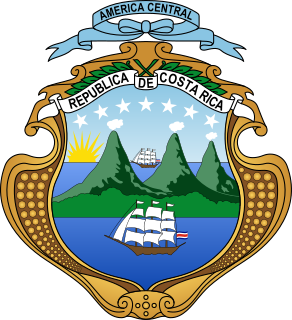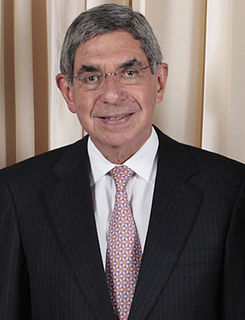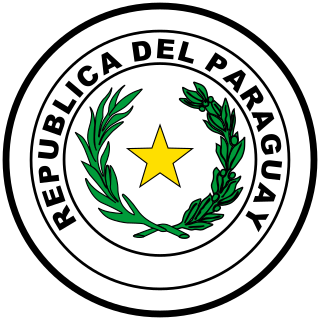
Constituent Assembly elections were held in Costa Rica on 8 December 1948, following the Costa Rican Civil War. The result was a victory for the National Unity Party, which won 34 of the 45 seats. Voter turnout was 47.5%. The assembly drew up the 1949 constitution.

General elections were held in Costa Rica on 7 December 1913, the first direct elections since 1844. They were also the first elections to have universal male suffrage, after economic and educational requirements were eliminated. Máximo Fernández Alvarado of the Republican Party won the presidential election, but both he and runner-up Carlos Durán Cartín later resigned and Alfredo González Flores was appointed president by Congress on 8 May 1914. The Republican Party also won the parliamentary election. Voter turnout was 78.0% in the presidential election and 78.6% in the parliamentary election.

Mid-term parliamentary elections were held in Costa Rica on 5 December 1915. The result was a victory for the Republican Party, which received almost two-thirds of the vote. Voter turnout was 50.2%.

Mid-term parliamentary elections were held in Costa Rica on 2 December 1921. The Agricultural Party received the most votes, but only won 25.5% of the total. Voter turnout was 30.4%.

Mid-term parliamentary elections were held in Costa Rica on 6 December 1925. The Republican Party received the most votes. Voter turnout was 35.8%.

General elections were held in Costa Rica on 1 April 1917. Federico Tinoco Granados had seized power in a military coup in January and was the only candidate in the presidential election. The elections were considered to be fraudulent and although former president Rafael Yglesias Castro received 249 votes in Alajuela, they were recorded as invalid ballots. Voter turnout was reported to be 69.2% in the presidential election and 67.6% in the parliamentary election.

Mid-term parliamentary elections were held in Costa Rica on 9 February 1930. The result was a victory for the National Union, which received 32.5% of the vote. Voter turnout was 30.7%.

Mid-term parliamentary elections were held in Costa Rica on 11 February 1934. The result was a victory for the Independent National Republican Party, which received 48.1% of the vote. Voter turnout was 41.6%.

Mid-term parliamentary elections were held in Costa Rica on 13 April 1938. The result was a victory for the National Republican Party, which received 62.1% of the vote. Voter turnout was 70.8%.

Mid-term parliamentary elections were held in Costa Rica on 8 February 1942. The result was a victory for the Independent National Republican Party, which received 63.3% of the vote. Voter turnout was 74.0%.

Mid-term parliamentary elections were held in Costa Rica on 10 February 1946. The result was a victory for the Independent National Republican Party, which received 50.5% of the vote. Voter turnout was 64.3%. They were the last mid-term elections in the country's history.

General elections were held in Costa Rica on 9 February 1936. León Cortés Castro of the Independent National Republican Party won the presidential election, whilst the party also won the parliamentary election, in which they received 59.4% of the vote. Voter turnout was 68.8% in the presidential election and 68.9% in the parliamentary election.

General elections were held in Costa Rica on 11 February 1940. Rafael Ángel Calderón Guardia of the Independent National Republican Party won the presidential election. Voter turnout was 80.8% in the presidential election and 65.6% in the parliamentary election.

General elections were held in Costa Rica on 8 February 1948. Otilio Ulate Blanco of the National Union Party won the presidential election with 55.3% of the vote, although the elections were deemed fraudulent and annulled by Congress, leading to the Costa Rican Civil War later that year. Following the war, the results of the parliamentary election were also annulled. Voter turnout was 43.8% in the vice-presidential election and 49.2%.

General elections were held in Costa Rica on 2 February 1958. Mario Echandi Jiménez of the National Union Party won the presidential election, whilst the National Liberation Party won the parliamentary election. Voter turnout was 64.7%.

General elections were held in Costa Rica on 2 February 1986. Óscar Arias of the National Liberation Party won the presidential election, whilst his party also won the parliamentary election. Voter turnout was 81.8%.

General elections were held in Costa Rica on 4 February 1990. Rafael Ángel Calderón Fournier of the Social Christian Unity Party won the presidential election, whilst his party also won the parliamentary election. Voter turnout was 81.8%.

General elections were held in Costa Rica on 3 February 2002. For the first time in the country's history, no candidate in the presidential election passed the 40% threshold. This meant a second round of voting had to be held on 7 April which saw Abel Pacheco of the Social Christian Unity Party defeat the National Liberation Party's Rolando Araya Monge.

Constitutional Assembly elections were held in Paraguay on 1 December 1991. The result was a victory for the Colorado Party, which won 122 of the 198 seats. Voter turnout was 51.7%. Following the election, a new constitution was published in 1992. The new constitution reintroduced the position of Vice President and allowed for the President to be elected by a plurality of the vote.

Vice Presidential elections were held in Paraguay on 13 August 2000, following the assassination of Luis María Argaña. The result was a victory for Julio César Franco of the Authentic Radical Liberal Party, who received 49.6% of the vote. Voter turnout was 60.7%.








